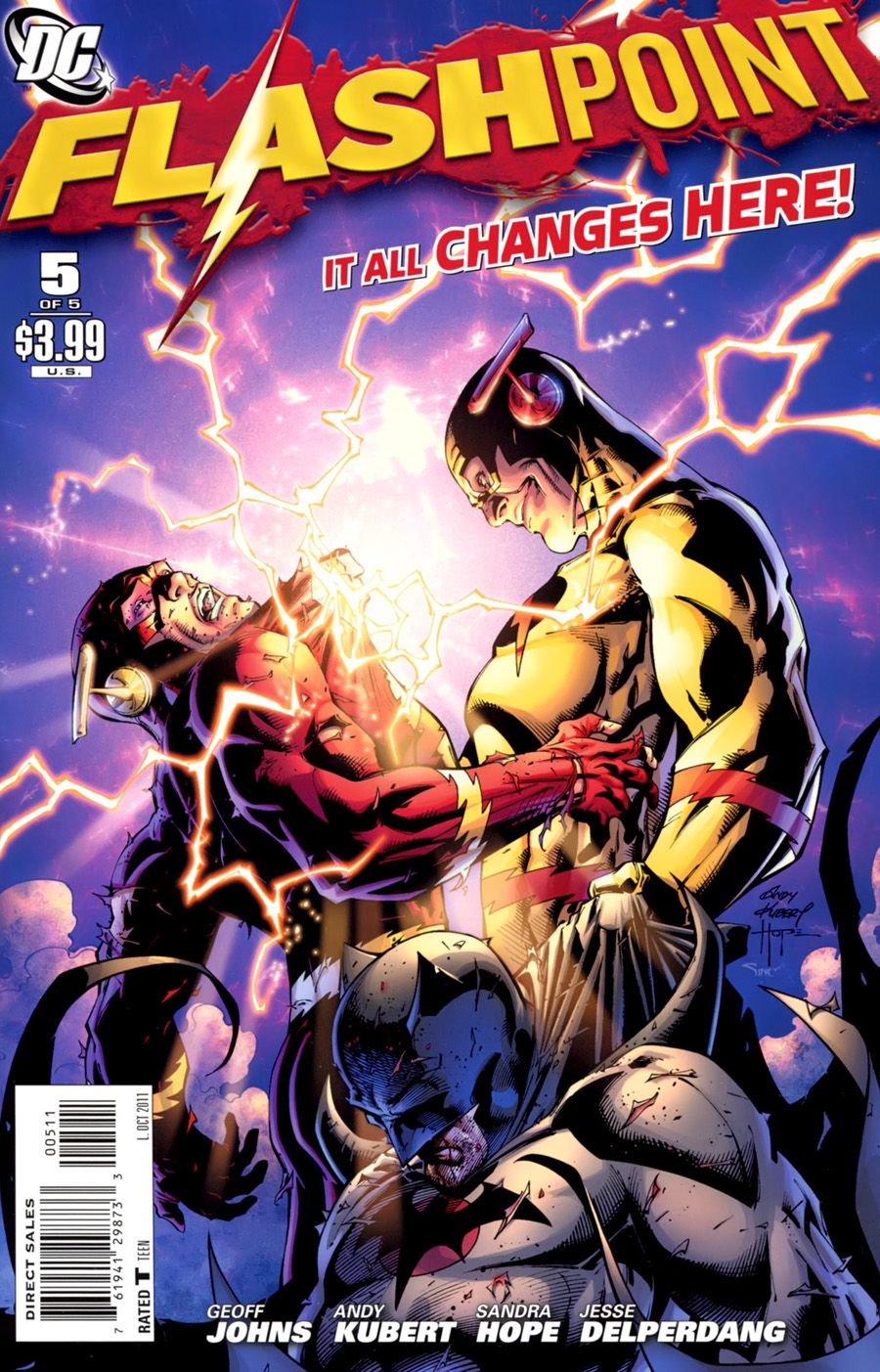Poor "Flashpoint."
At this point, I suspect most people aren't reading it to see the actual conclusion to Geoff Johns and Andy Kubert's mini-series event. No, they're picking it up to see how the DC Universe Re-Launch occurs. (The cover helpfully notes, "It all changes HERE!") But let's set that big moment that everyone's waiting for aside for a few minutes and give the rest of the issue some attention that it's almost certainly not receiving.
This is the issue where we get the final pieces of exposition. The explaining how and why "Flashpoint" occurred and what needs to be done to fix it. And in doing so, it also answers a question that perhaps wasn't articulated: with one exception, all of the changed characters in "Flashpoint" have nothing to do with the main storyline. The Atlantean vs. Amazon war? It's not only superfluous to "Flashpoint," it's barely even resolved. Most of the characters are either in the background, or get a one-or-two panel cameo. And with some of those cameos, like the character who lands on top of Enchantress at super-speed so that she splatters, I could have done without that moment.
Buried in the exploding bodies and sinking islands are two scenes about parents and their sons, and they are the emotional core of "Flashpoint." They're the pieces that I wish we'd seen a lot more of; forget half-seen concepts like the Shazam Kids or Grifter's Resistance, this is the interesting idea in "Flashpoint" that should have received a great deal of attention. Considering the two scenes bookend the shifting of the timeline, they could have felt repetitive, but they manage to not do so; it's where we get to see Johns' strength as a writer and it makes me wish this hadn't gotten lost in the overall shuffle of "Flashpoint's" five issues.
Kubert's pencils, likewise, are at their finest in those two scenes. The earlier portions of the comic set in England feel cluttered, gray and lacking in energy; I'm not entirely sure anyone could've made them work that well, but with those two scenes, it's a reminder why Kubert is a big name in the comics industry. From the moment Barry arrives on the front lawn until that fateful moment that he jumps back into the time stream, the images are carefully drawn and are full of visual emotional response. It's good stuff and I'm glad Kubert's best art for the series was on those pages.
The moment everyone's been waiting for, of course, is the rewriting of the timeline to the new DC Universe. It's supposedly a big deal, the focal moment of "Flashpoint." Unfortunately, it feels tacked on. The moment in question is a two-page spread, showing the DC Universe merging with Wildstorm and some of the Vertigo characters, with a mysterious woman explaining how everything needs to come back together to fight off some future summer crossover and tie-in extravaganza.
But if you skip those two pages? You'd never know they were gone. Tape them together and the comic flows just as well. Actually, it flows a little better. We jump directly from the moment the Flash fixes the timestream (and a final "Krraakkoomm" sound-effect) to Barry waking up with everything restored. There's also absolutely no mention of the timeline having changed to anything other than what Barry had left it.
I'm not saying that this addition was a last-minute addition to the script; I wasn't there, and this is something that only Johns, Kubert, Jim Lee, Dan DiDio, and Eddie Berganza probably only know for certain. But as a reader, it's the impression it left me with.
And so, "Flashpoint" comes to an end. Ultimately, that two-page spread aside, it feels like a Flash storyline on steroids, one that probably didn't deserve all the extra spin-offs and one-shots and even core mini-series. With lower expectations and reach, I think "Flashpoint" might have been a fun little group of issues in "The Flash." (A nice closing moment for Johns, too, considering that he began writing "The Flash" with his alternate-world story "Wonderland.") Alas, this story just doesn't hold up to the expectations placed on its shoulders.

